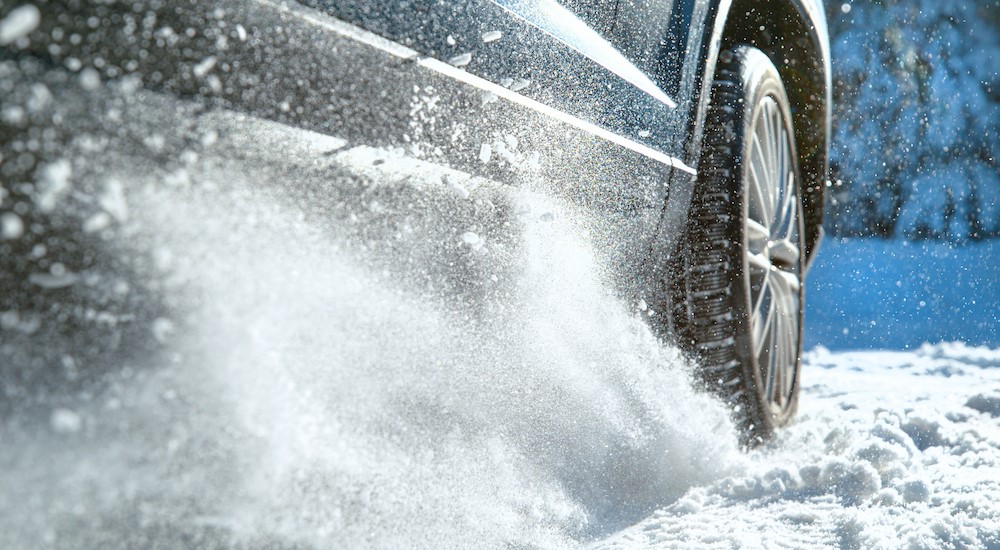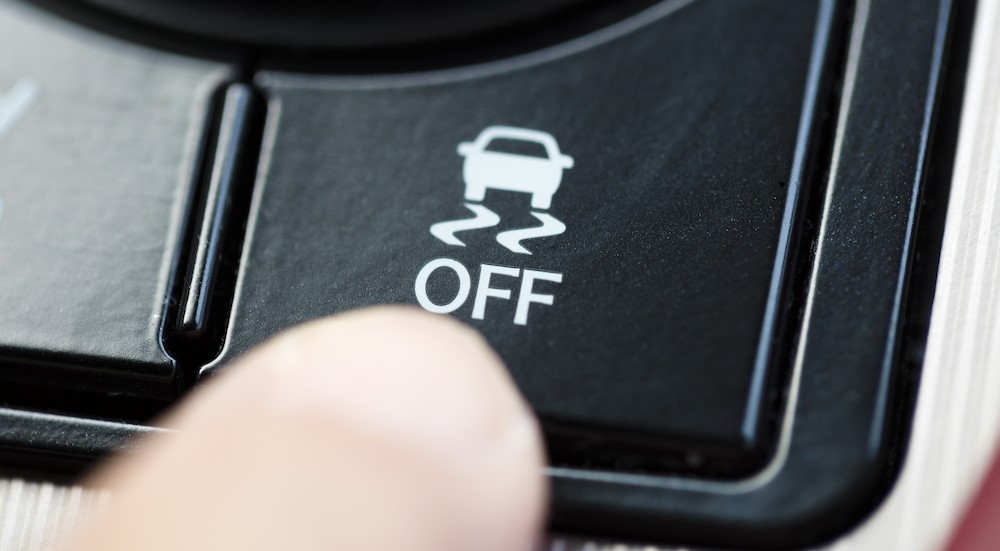Since 2012, all new cars sold in the US have been required to have a traction control system (TCS). First developed in the early 1970s, traction control was introduced to help prevent “wheel spin” due to loss of grip. Multiple studies have confirmed the effectiveness of traction control in reducing accidents. Not surprisingly, the technology has found its way into racing as well, despite attempts by the FIA and other sanctioning bodies to ban it because it is so helpful.
Because of its pervasiveness, and since modern cars keep the TCS on by default, it’s easy not to think about traction control as you drive. As such, many people don’t realize traction control falls into the same category as automotive features like air conditioning, heated seats, lift kits, cruise control, and sunroofs. Just because you have them doesn’t mean you should always use them, or even that it’s a good idea to use them.
In this guide, I’ll look at what TCS does and when you should (and shouldn’t) use it. By doing so, I hope to give you a better understanding of traction control so you can determine whether it should be on.
How Traction Control Works
The purpose of traction control is to improve grip when you’re driving. How it does so is pivotal to the larger question of when to activate your TCS and when you should disable it. While there are variations in each system, the basic concept is that each wheel has an active sensor that monitors its speed and spin rate, sending this data to the engine control unit (ECU). If a tire spins notably faster than the other three, a near-universal indicator for a loss of traction, the TCS kicks in and automatically slows you down by cutting power to the wheel, using the brakes, or both. This evens out the power distribution and wheel spin to maintain stability.
Originally a primary feature to improve grip, modern traction control is often built into the electronic stability control (ESC) system. This technology was first introduced on passenger cars in 1995 and was mandated by the US government the same year as TCS. Traction control also works in tandem with the anti-lock brake system (ABS) so the wheels don’t lock up when the ECU or the driver applies braking force. You can tell the TCS has activated if the appropriate dash light turns on or blinks. You may also feel a slight lurch or hear a grinding noise as TCS rapidly cycles the brake on the spinning wheel on and off.

When Traction Control Helps
In almost every vehicle, traction control automatically turns on when you start the engine, and you must turn it off manually. There are many good reasons for this automatic activation. The biggest is that traction control is a huge boon when the roads are slippery. The TCS greatly reduces the chances of hydroplaning and skidding in rain and snow. Even if the weather is nice, traction control is a safeguard in case you unexpectedly hit a wet or icy patch.
The system also benefits you when you’re cornering or accelerating, especially if your vehicle doesn’t have a locking or limited-slip rear differential. Traction control senses if you’re starting to lose grip and help you regain it. Finally, traction control assists your vehicle on sand, grass, and other loose or low-grip terrain. It’s common for one wheel to hit a slick spot, and the TCS helps get it back spinning at the proper rate. This makes it possible to use AWD and even 2WD vehicles for light and moderate off-roading.
For these situations, TCS is an essential safety feature. One study found that vehicles with traction control/stability control were 52.6% less likely to be involved in a single-vehicle crash. Many modern vehicles have multiple drive modes that change when and how much the TCS engages. These modes can include Normal, Eco, Sport, and Off-Road. Other vehicles have Hill Descent Control, a variation of traction control to help you maintain grip when going down a steep incline.
When to Turn Traction Control Off
Although traction control is usually good, there are a few circumstances where it might hinder you. The most common circumstance is if you’re driving in the mud or snow. The TCS limits how fast your wheels can spin, which reduces momentum, and you need momentum in these conditions to avoid getting stuck. Furthermore, if you do get stuck, you’ll need that high spin rate to help you rock the vehicle out or so the tire catches on boards, sand, branches, etc. Turning the traction control off will allow the wheelspin you need to dig your way out of these loose surfaces.
On a related note, you probably shouldn’t use traction control if driving on icy roads. These are unique circumstances in that icy roads are always slippery, never alternating between “no grip” and “good grip.” As such. a TCS will continue trying to reduce wheel speed, robbing you of needed power. It’s important to note these systems control traction but don’t create traction. Extended driving on ice and other slippery surfaces with traction control can also quickly wear the brakes out. You’re better off using snow chains and snow tires for icy surfaces and driving more carefully during long trips.
The last situation is if you like drifting (on closed circuits, of course). Going for a slide requires high wheel spin, and traction control won’t let you achieve it. Switch the TCS off while drifting, then reactivate it when you return to the main roads. To turn your traction control off or on, look for a button with an image of a car with wavy lines behind the tires. Other vehicles may have it built into the infotainment menu.

How Do I Know if My Traction Control System Is Broken?
Like every component on a car, the TCS may eventually fail, whether due to a burned-out sensor, a broken wire, road debris covering the sensors, or another issue. The most obvious way to tell if the traction control is malfunctioning is if you start slipping, sliding, and losing grip a lot more often. To avoid these potentially dangerous situations, watch for these other signs of traction control failure:
- The TCS dash warning light comes on
- The TCS button light is constantly on or blinking
- The TCS won’t turn on or off when you press the button
- You start having problems with the ABS
Bring your car to a repair shop to get the TCS fixed as soon as possible. If the warning light is on, you or a technician can use an OBD II diagnostic tool to read the error code. Until the system is fixed, you must drive much more cautiously, especially in less-than-ideal conditions. At that point, your only traction control is in your right foot.
Final Thoughts
Traction control has become omnipresent on US roads and in many other countries, including Canada and the European Union among those that have mandated traction control and/or ESC systems. The average everyday driver can usually pilot their vehicles normally and let the TCS do its thing. However, those who do extreme off-roading, drive for long periods on slippery roads, or enjoy throwing their cars into a slide may benefit from temporarily deactivating the system.
Like other features, traction control is a tool at your disposal with good and bad use cases. Knowing when and when not to use traction control can help you get the most from your time on the roads, trails, or tracks.

